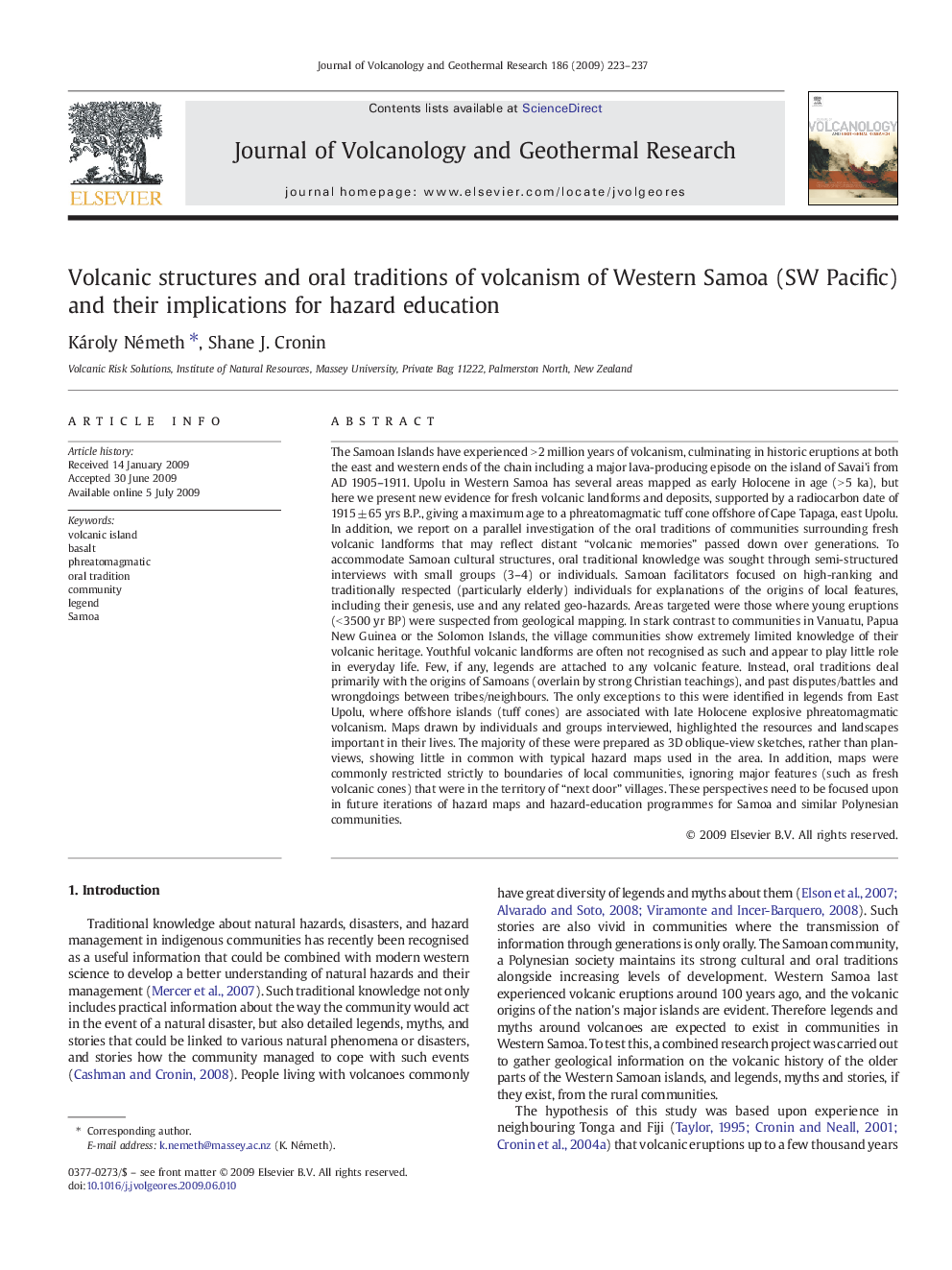| کد مقاله | کد نشریه | سال انتشار | مقاله انگلیسی | نسخه تمام متن |
|---|---|---|---|---|
| 4715214 | 1638431 | 2009 | 15 صفحه PDF | دانلود رایگان |

The Samoan Islands have experienced > 2 million years of volcanism, culminating in historic eruptions at both the east and western ends of the chain including a major lava-producing episode on the island of Savai'i from AD 1905–1911. Upolu in Western Samoa has several areas mapped as early Holocene in age (> 5 ka), but here we present new evidence for fresh volcanic landforms and deposits, supported by a radiocarbon date of 1915 ± 65 yrs B.P., giving a maximum age to a phreatomagmatic tuff cone offshore of Cape Tapaga, east Upolu. In addition, we report on a parallel investigation of the oral traditions of communities surrounding fresh volcanic landforms that may reflect distant “volcanic memories” passed down over generations. To accommodate Samoan cultural structures, oral traditional knowledge was sought through semi-structured interviews with small groups (3–4) or individuals. Samoan facilitators focused on high-ranking and traditionally respected (particularly elderly) individuals for explanations of the origins of local features, including their genesis, use and any related geo-hazards. Areas targeted were those where young eruptions (< 3500 yr BP) were suspected from geological mapping. In stark contrast to communities in Vanuatu, Papua New Guinea or the Solomon Islands, the village communities show extremely limited knowledge of their volcanic heritage. Youthful volcanic landforms are often not recognised as such and appear to play little role in everyday life. Few, if any, legends are attached to any volcanic feature. Instead, oral traditions deal primarily with the origins of Samoans (overlain by strong Christian teachings), and past disputes/battles and wrongdoings between tribes/neighbours. The only exceptions to this were identified in legends from East Upolu, where offshore islands (tuff cones) are associated with late Holocene explosive phreatomagmatic volcanism. Maps drawn by individuals and groups interviewed, highlighted the resources and landscapes important in their lives. The majority of these were prepared as 3D oblique-view sketches, rather than plan-views, showing little in common with typical hazard maps used in the area. In addition, maps were commonly restricted strictly to boundaries of local communities, ignoring major features (such as fresh volcanic cones) that were in the territory of “next door” villages. These perspectives need to be focused upon in future iterations of hazard maps and hazard-education programmes for Samoa and similar Polynesian communities.
Journal: Journal of Volcanology and Geothermal Research - Volume 186, Issues 3–4, 10 October 2009, Pages 223–237